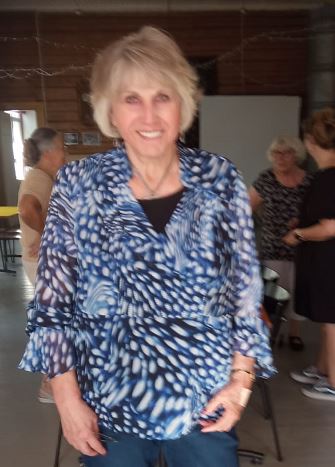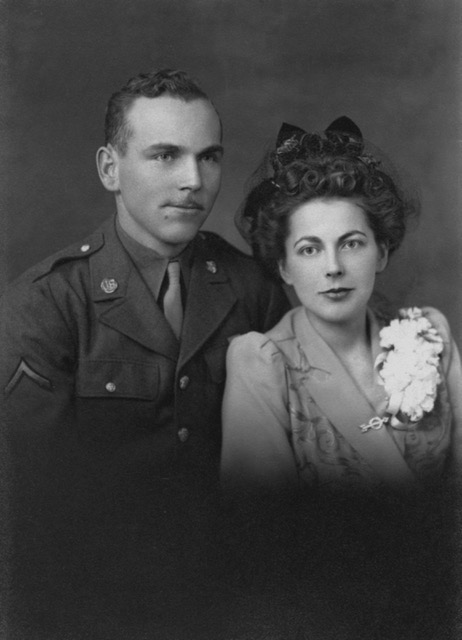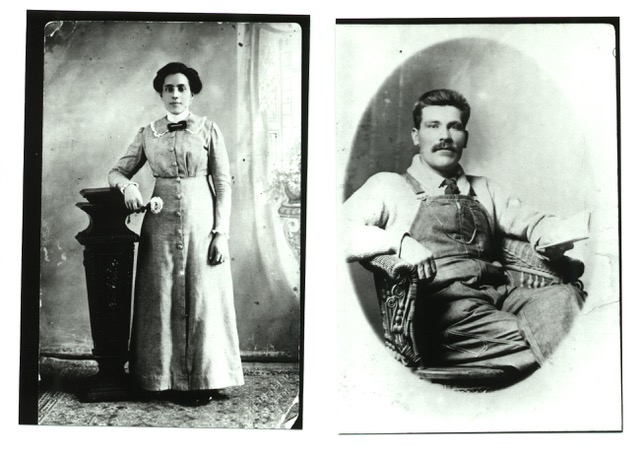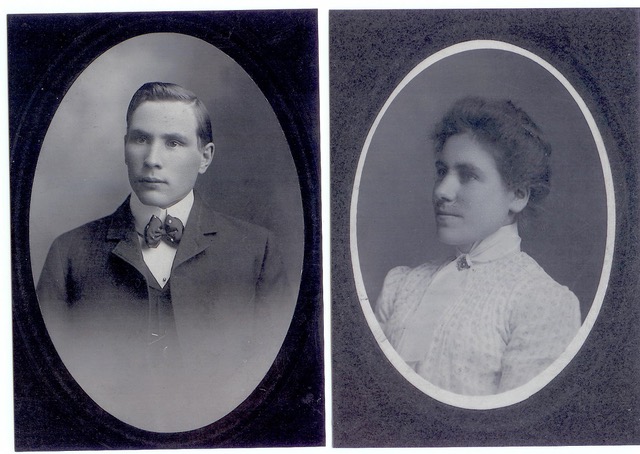Greetings to my Honkajärvi cousins

I was happy to discover two years ago that there was a Honkajärvi Family Club. I also enjoyed meeting new cousins and seeing the area where my paternal ancestors lived. I’m 100% Finnish and look forward to meeting more cousins on my next trip to Finland.
Patricia Nevala 2024
A Paternal and Maternal Family History –
My great grandfather, Juho (John) Kustaa Heikinpoika Nevala was born in Honkajärvi in 1854. His mother died when he was less than 3 years old and his father died when he was 8 years old. As an adult, he worked as a laborer before he married my great grandmother, Iida (Ida) Malakiaksentytär Heikkilä in 1879. She was the illegitimate daughter of Maria Erkintytär Svanvik and Malakias Heikinpoika Heikkilä, the brother of Maria’s first husband, Juho Heikinpoika Svanvik.
John Nevala first emigrated to America in the 1890s – probably about 1893 – and went to Telluride, Colorado where he worked as a gold miner. Telluride became a bustling town of 5,000 once gold was discovered there. There were hundreds of Finns and Swede Finns living there by the late 1800s. By 1890, the railroad even connected Telluride to the outside world.
According to an article in the Siirtolainen newsletter, in February 1898, John and 6 other Finns went to Alaska to join the Alaska gold rush. By this time, Ida and their children were also living in Telluride and the Siirtolainen article says she left to return to Finland on 17 March 1898. John didn’t stay long in Alaska because he and Ida were back in Finland by 16 October 1898 when they both took communion. The couple then returned to Telluride.
In November 1901, there was a tragic fire at the Smuggler-Union mine where John worked. Smoke filled the mine shafts and miners were trapped. At first, the fear was that a hundred or more miners were killed but a number had escaped through other shafts. It was thought that John may have survived for several hours moving through the shafts but eventually died of smoke inhalation. The death toll was 28 and the whole community was in shock and mourning. John’s body was the last removed from the mine. His body, along with the bodies of other Finns, were brought to the Finn Hall and then carried to the Lone Tree cemetery where they were buried. In my family, I always heard stories that my great grandfather had died in a mining accident but it took more than two decades of searching to find his story. Today, with the Internet, it would only take minutes.
After John’s death, Ida returned to Finland but I believe she returned to Telluride by April 1902. Records say Ida, along with 8 widows/parents of other miners who died, filed lawsuits against the mine company. So far, I haven’t been able to find out whether their lawsuits were successful. She was back in Finland by 1904.
Of the seven children born to John and Ida, 5 emigrated to America. My grandfather, Frans (Frank) Juhonpoika Nevala was the oldest and came in November 1899. He went to Marquette in the Upper Peninsula of Michigan and remained there for the rest of his life, first working as a laborer and then for many years at a plant in Marquette that made charcoal.
Hedvig Josefiina Matintytär Korpela, my father’s mother, arrived in America in June 1901 but with only the clothes on her back. Her ship had hit the rocks and sunk off the coast of Canada and she lost everything. Luckily, there were no lives lost. Hedvig joined her sister who was living in a small town near Marquette. She worked as a servant until she met and married Frank.
I believe that Hedvig and Frank met through the church. They were two of the earliest members in the newly-established Sion Lutheran Church in Marquette – the same church I attended in my youth. They married in 1904 and had seven children, with 6 surviving to adulthood. Frank was a hard worker during the week but liked his alcohol on the weekends and even got in trouble with the law for selling illegal liquor. I think this probably horrified Hedvig who was a stern, proud woman and teetotaler (someone who doesn’t drink). I never knew Frank but was told he was a very sociable man so I always wondered how they ended up together. My father, Matheau Nevala (born Matti but changed it later) was born in 1917, the sixth child out of seven.

Matt met my mother, Ethel Marie Juhontytär Rantanen, during WWII at a large dance club in Chicago called “Bit of Finland”. My dad heard my mother mention “Marquette” so that became his introduction. My dad impressed my mother with how well he could dance. They didn’t know it at the time, but both Matt’s parents and Ethel’s parents already knew each other from the church in Marquette!
My mother’s mother, Maria Heikintytär Hannulabakka (later Hannula), was 17 years old when she came to America in December 1899 to work as a servant in New York City. She did household chores and took care of the children of her employer. There were other Finnish women who also worked as servants so she probably wasn’t lonely. Maria later said that one of her employers was very kind to her and that they exchanged letters for many years.

In 1904, she learned that her father, Heikki Matinpoika Hannulabakka, who was an awful businessman, lost both his creamery business and the Hannulabakka homestead in Alajärvi. Maria returned to Finland for 5 years to take care of her parents and buy them a small croft but then returned to New York City.
My mother’s father was Juho Kustaanpoika Rantanen (born Kanstren) from Kurikka. He emigrated in December 1901 with his first wife, Hilma Mikontytär Isomäki. They lived in Marquette for several years where some of their children were born. These were hard times for the family and John was able to earn $0.18/hour in Marquette although he may not have enjoyed living in a city. Like my father’s parents, John and Maria were active in the new Sion Lutheran Church.
Of the seven children born to John and Ida, 5 emigrated to America. My grandfather, Frans (Frank) Juhonpoika Nevala was the oldest and came in November 1899. He went to Marquette in the Upper Peninsula of Michigan and remained there for the rest of his life, first working as a laborer and then for many years at a plant in Marquette that made charcoal.
Hedvig Josefiina Matintytär Korpela, my father’s mother, arrived in America in June 1901 but with only the clothes on her back. Her ship had hit the rocks and sunk off the coast of Canada and
she lost everything. Luckily, there were no lives lost. Hedvig joined her sister who was living in a small town near Marquette. She worked as a servant until she met and married Frank.

I believe that Hedvig and Frank met through the church. They were two of the earliest members in the newly-established Sion Lutheran Church in Marquette – the same church I attended in my youth. They married in 1904 and had seven children, with 6 surviving to adulthood. Frank was a hard worker during the week but liked his alcohol on the weekends and even got in trouble with the law for selling illegal liquor. I think this probably horrified Hedvig who was a stern, proud woman and teetotaler (someone who doesn’t drink). I never knew Frank but was told he was a very sociable man so I always wondered how they ended up together. My father, Matheau Nevala (born Matti but changed it later) was born in 1917, the sixth child out of seven.
Matt met my mother, Ethel Marie Juhontytär Rantanen, during WWII at a large dance club in Chicago called “Bit of Finland”. My dad heard my mother mention “Marquette” so that became his introduction. My dad impressed my mother with how well he could dance. They didn’t know it at the time, but both Matt’s parents and Ethel’s parents already knew each other from the church in Marquette!
My mother’s mother, Maria Heikintytär Hannulabakka (later Hannula), was 17 years old when she came to America in December 1899 to work as a servant in New York City. She did household chores and took care of the children of her employer. There were other Finnish women who also worked as servants so she probably wasn’t lonely. Maria later said that one of her employers was very kind to her and that they exchanged letters for many years.

In 1904, she learned that her father, Heikki Matinpoika Hannulabakka, who was an awful businessman, lost both his creamery business and the Hannulabakka homestead in Alajärvi. Maria returned to Finland for 5 years to take care of her parents and buy them a small croft but then returned to New York City.
My mother’s father was Juho Kustaanpoika Rantanen (born Kanstren) from Kurikka. He emigrated in December 1901 with his first wife, Hilma Mikontytär Isomäki. They lived in Marquette for several years where some of their children were born. These were hard times for the family and John was able to earn $0.18/hour in Marquette although he may not have enjoyed living in a city. Like my father’s parents, John and Maria were active in the new Sion Lutheran Church.
